Demystifying DNS
Domain Name Lifecycle
Domain Registration Process
In this lesson, we dive deep into the domain registration process by using an analogy involving three key actors: the registrar, the registrant, and the registry. This in-depth explanation builds on previous discussions about domain registration and DNS functionality to help you understand the underlying mechanisms that keep the digital world connected.
Key Actors in Domain Registration
- Registrar: Think of the registrar as an Internet real estate agent. Companies like GoDaddy, Namecheap, and Google Domains offer domain registration services and facilitate the interaction between the registrant and the registry.
- Registrant: This is the individual or organization looking to secure a unique domain name—the digital equivalent of owning real estate.
- Registry: Registries maintain authoritative records for specific top-level domains (TLDs). For instance, VeriSign manages millions of transactions daily for the .com TLD, while the Public Interest Registry oversees .org domains.
Imagine a registrant growing tired of generic subdomains provided by platforms like WordPress.com, Medium.com, or GitHub.io. The desire for an independent identity on the Internet sparks a quest for a personal and unique domain name. This exploration leads to the discovery of registrars (the real estate agents) and the roaming power of registries (the custodians of the TLD territories).
Understanding TLD Territories
For example, VeriSign is responsible for managing .com domains, ensuring that each registration is correctly recorded. Meanwhile, the .org TLD is managed by the Public Interest Registry, dedicated to serving non-profits and organizations.
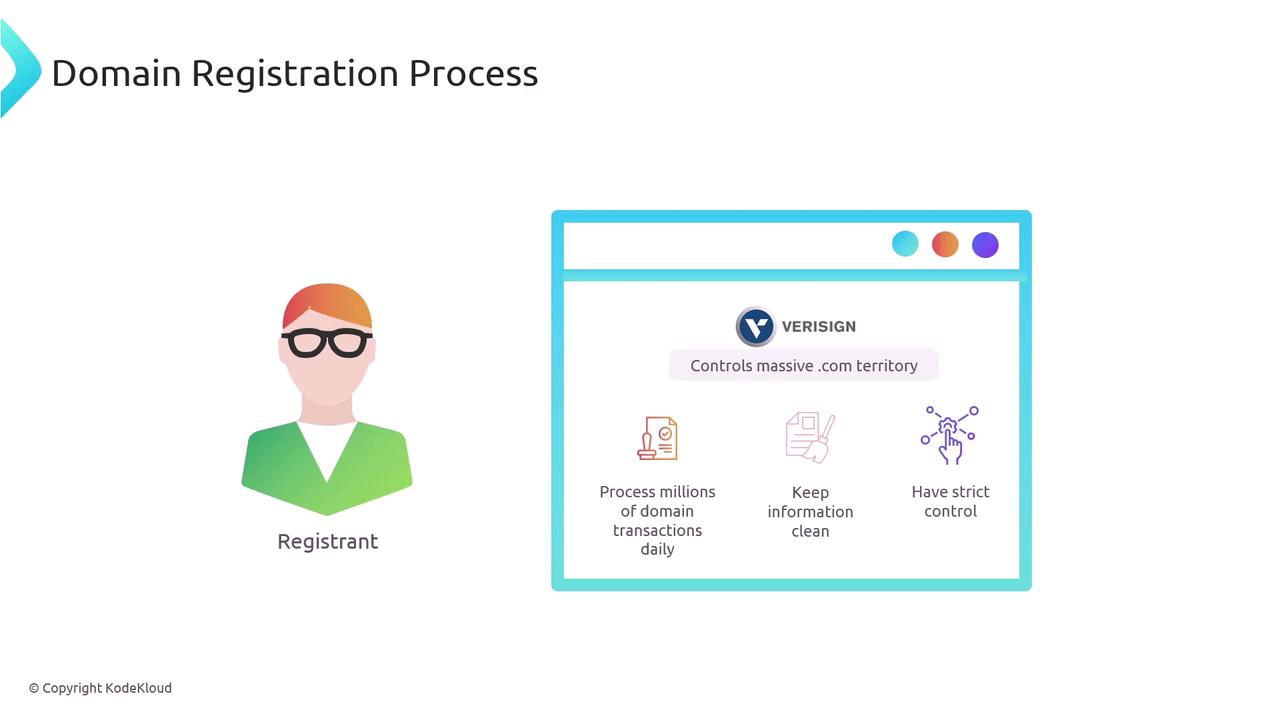
Similarly, within the .io territory, the Internet Computer Bureau has emerged as a prominent registry. This TLD has become popular with tech startups seeking modern and trendy digital addresses.
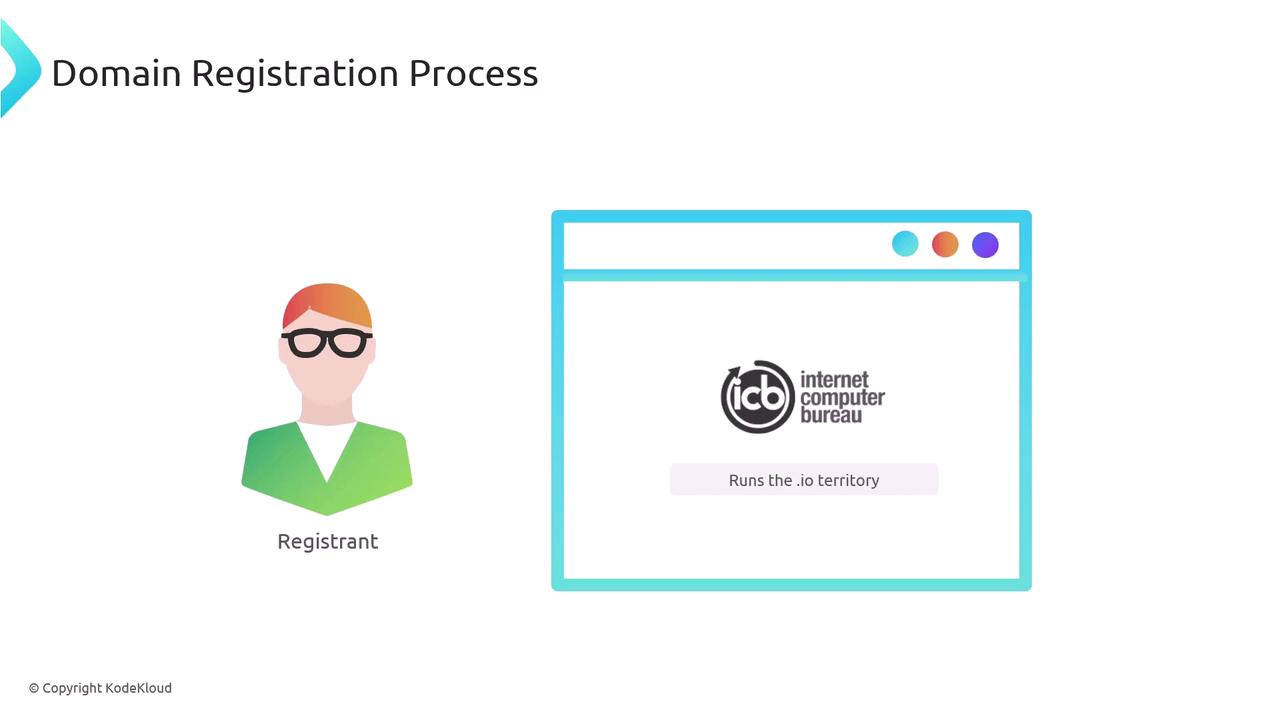
Domain Drop Catching
During his exploration, the registrant also learns about an underground facet of the industry called domain drop catching. Some registrars specialize in capturing domains the moment they expire. Automated systems deployed by companies such as DropCatch.com and SnapNames monitor for domain expirations and register valuable domains as soon as they become available.
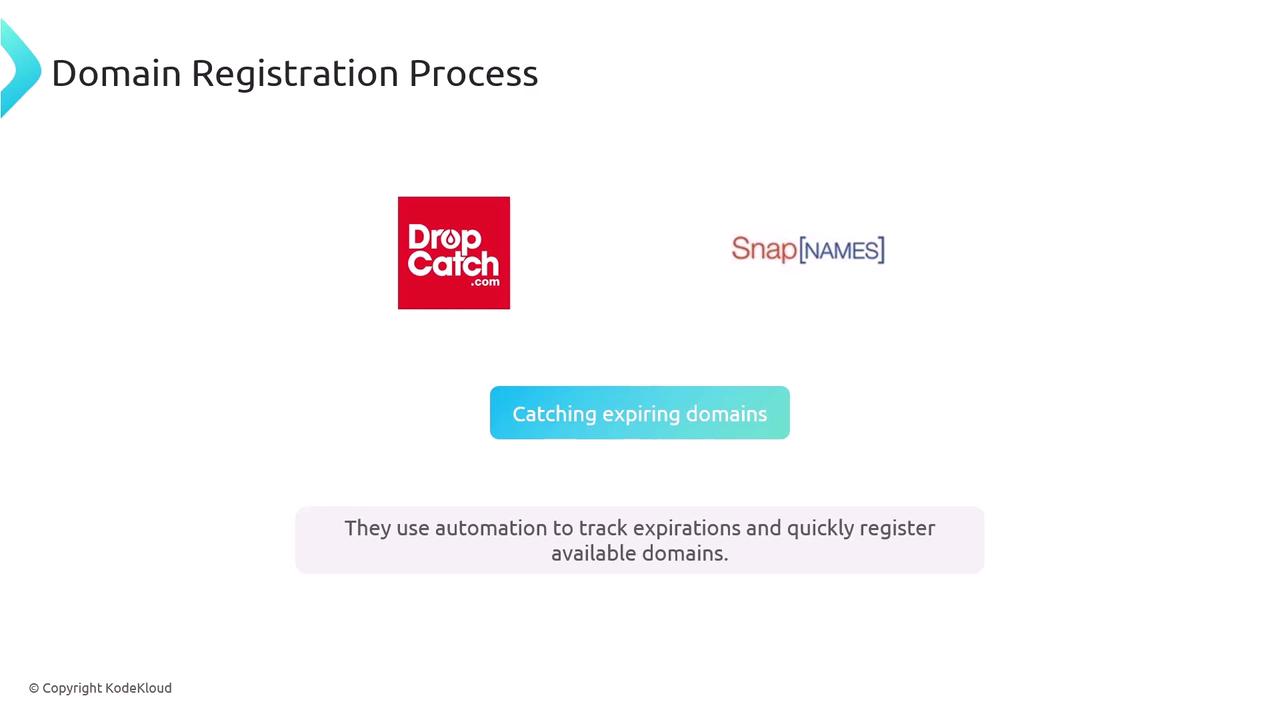
Expiration and Renewal Protocols
To prevent mass chaos from expired domains, registries have established a redemption system:
- 30-Day Grace Period for regular renewal
- 30-Day Redemption Period with higher fees
- 5-Day Waiting Period before a domain becomes generally available
Note
These periods ensure that domain owners have sufficient time to renew their domains while also providing a controlled process for third parties interested in expired domains.
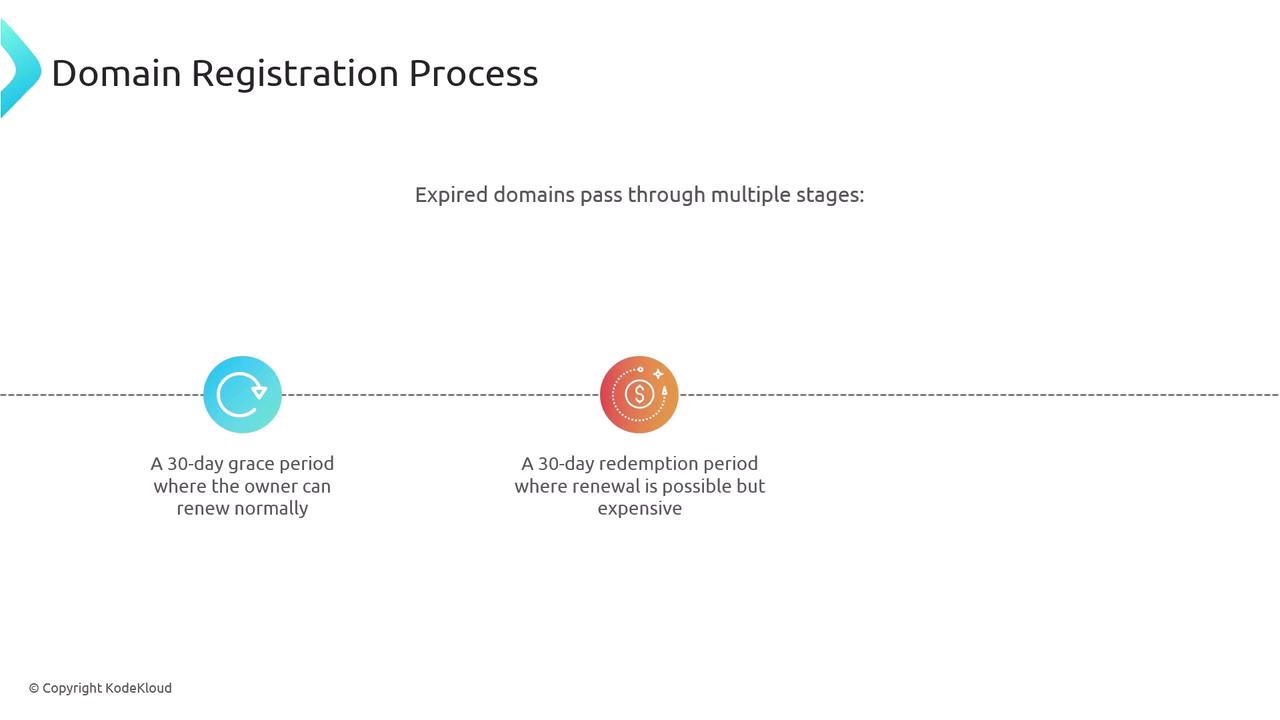
Pricing Insights
Traditional registrars like GoDaddy and Namecheap act similarly to real estate agencies by providing registration services. They work with registries that interact only with authorized registrars. During the process, the registrant discovers that pricing varies between registrars. Each registry charges its own protection fee. For example:
- .com domains: VeriSign charged between $8 to $20 yearly.
- .io domains: Typically around $60 yearly.
Registrars then add their markup to these base fees, influencing the final retail price.
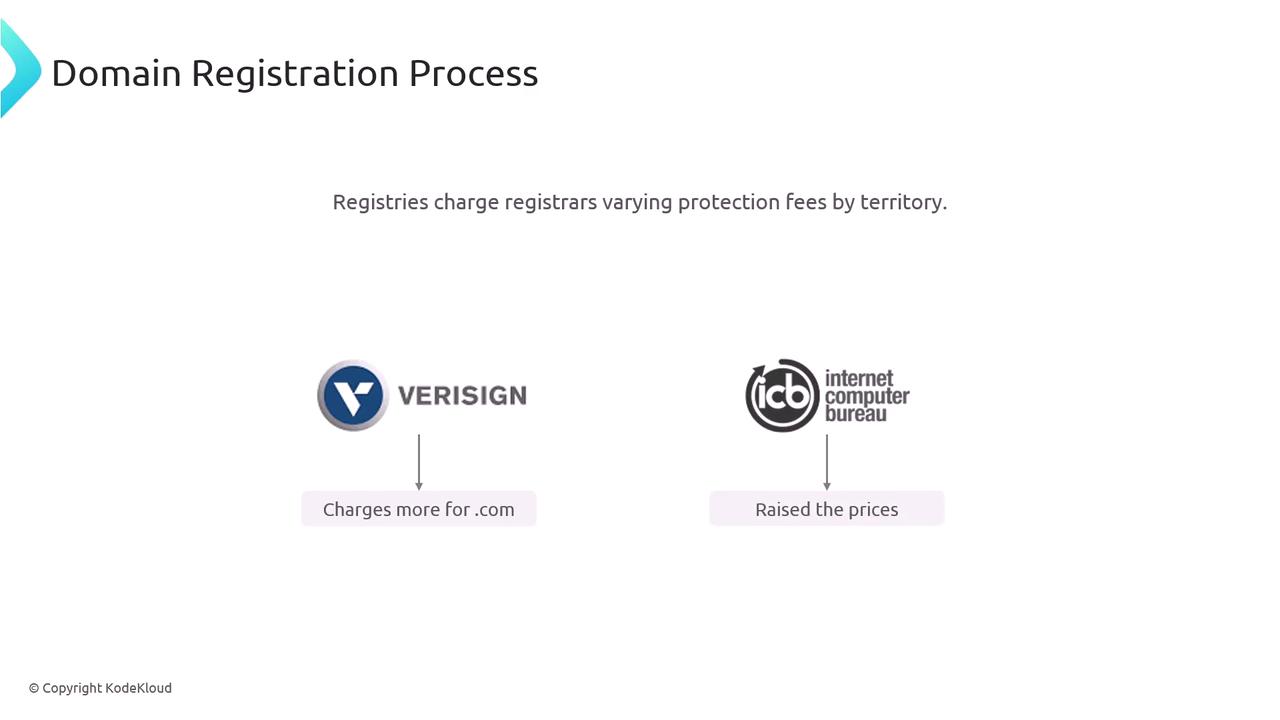
A Practical Domain Registration Scenario
Eager to secure a domain, the registrant initially attempts to register bestcode.com. However, after consulting with a reputable registrar, he learns that the domain is already taken. He then checks bestcode.io and finds it available—with a caveat that trendy TLDs like .io are snapped up quickly.
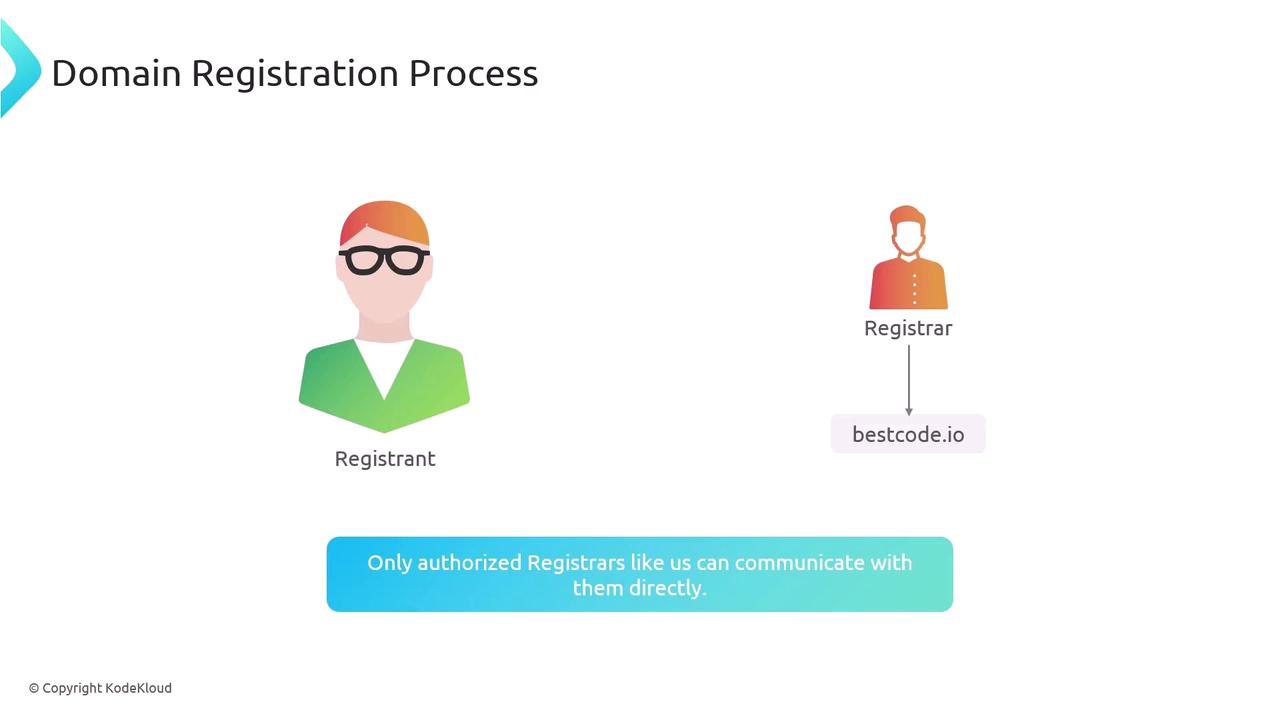
The EPP Protocol in Action
At this stage, the registrar communicates with the registry (Internet Computer Bureau) using the Extensible Provisioning Protocol (EPP). The dialogue unfolds as follows:
Registrar: I have a potential registrant interested in your territory.
Registry: Confirming a customer is interested in establishing within our namespace.
Registrar: They wish to register bestcode.io. All necessary information and payment have been collected.
Registry: Checking records... bestcode.io is available. As you are an authorized registrar, please proceed by sending over the technical details.
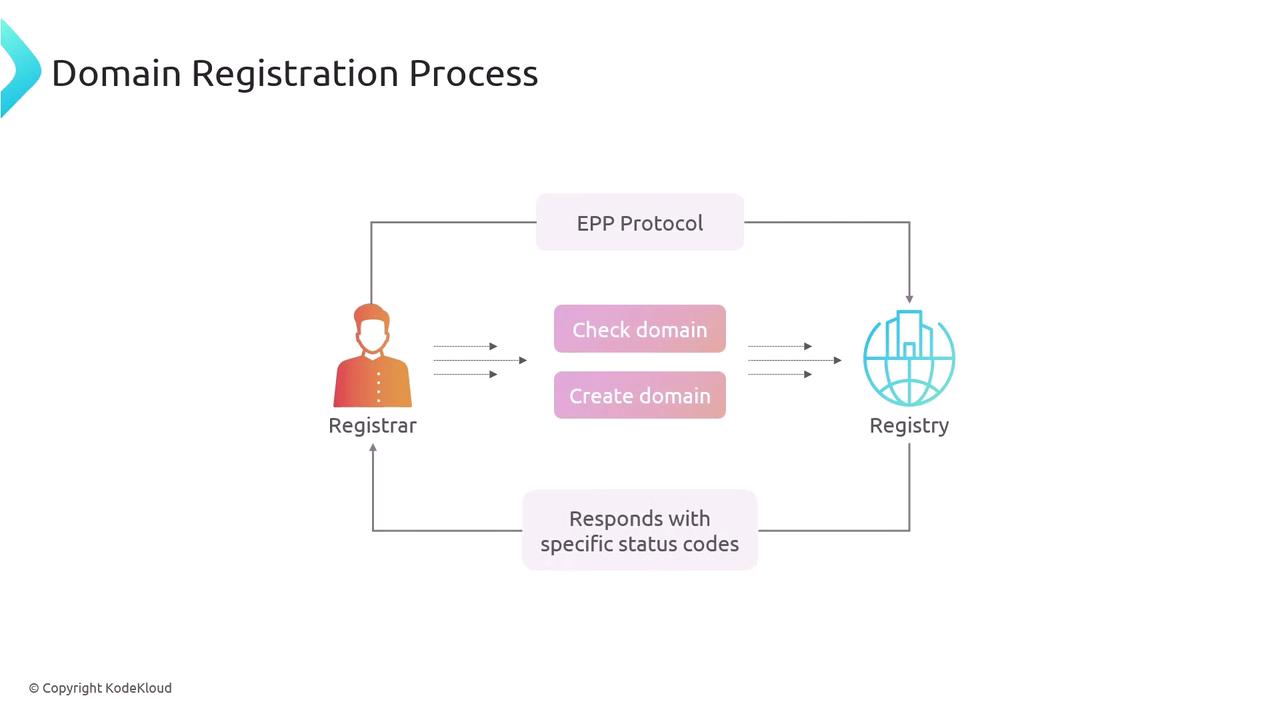
Once verified, the registry adds bestcode.io to the .io zone file along with its designated name servers. It is important to note that while the registry updates the zone file, it does not alter the root servers. The root servers continue to delegate all .io domains to the registry's name servers.
Configuring Name Servers
Next, the registrar collaborates with the registrant to configure the name servers. Think of name servers as building permits—they determine where your domain’s services are hosted. The registrant is given the option to use the registrar’s default name servers or provide custom names, such as those offered by their preferred hosting company.
In this example, the registrant opts for popular hosting company name servers, such as "ns1.hostcompany.com" and "ns2.hostcompany.com." After entering these details, the registrar notifies the registry accordingly.
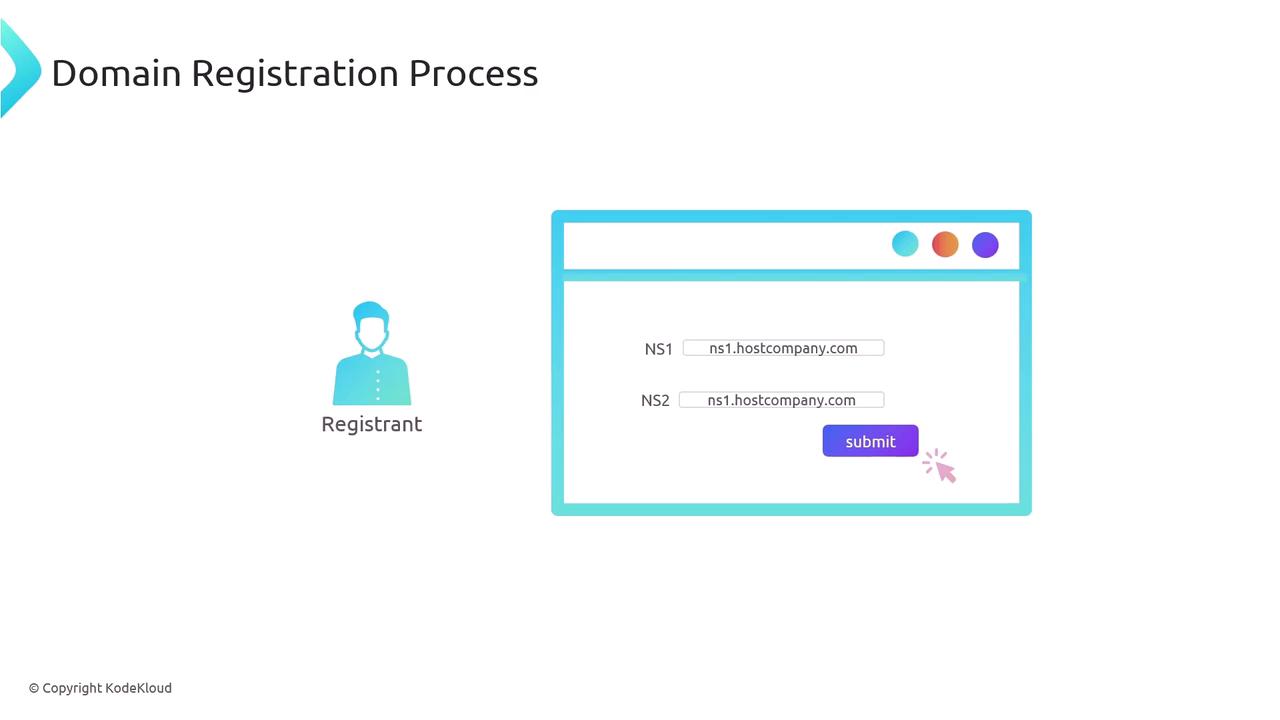
The registry’s zone file is then updated with these name server details. When a user enters bestcode.io in their browser, the updated zone file directs the DNS system to the authoritative name servers hosting the site.
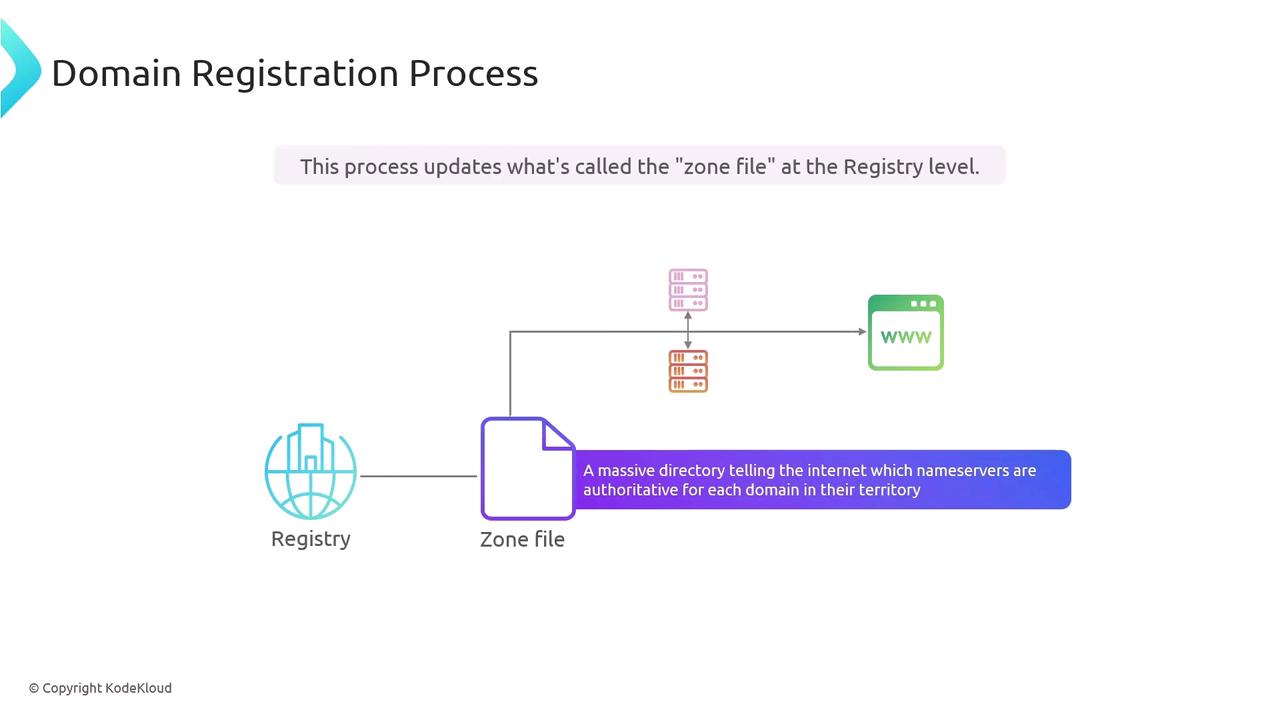
Finalizing the Registration
With the successful update of the zone file and the delegation of name servers, the registrant now owns a fully operational domain. Although the registrar handles the formal registration process and associated paperwork, the registrant retains complete freedom to decide where and how to use the domain. This separation between domain registration and hosting is fundamental—it means you can register your domain with one provider (e.g., GoDaddy) while hosting your website with another service (e.g., AWS or Cloudflare).
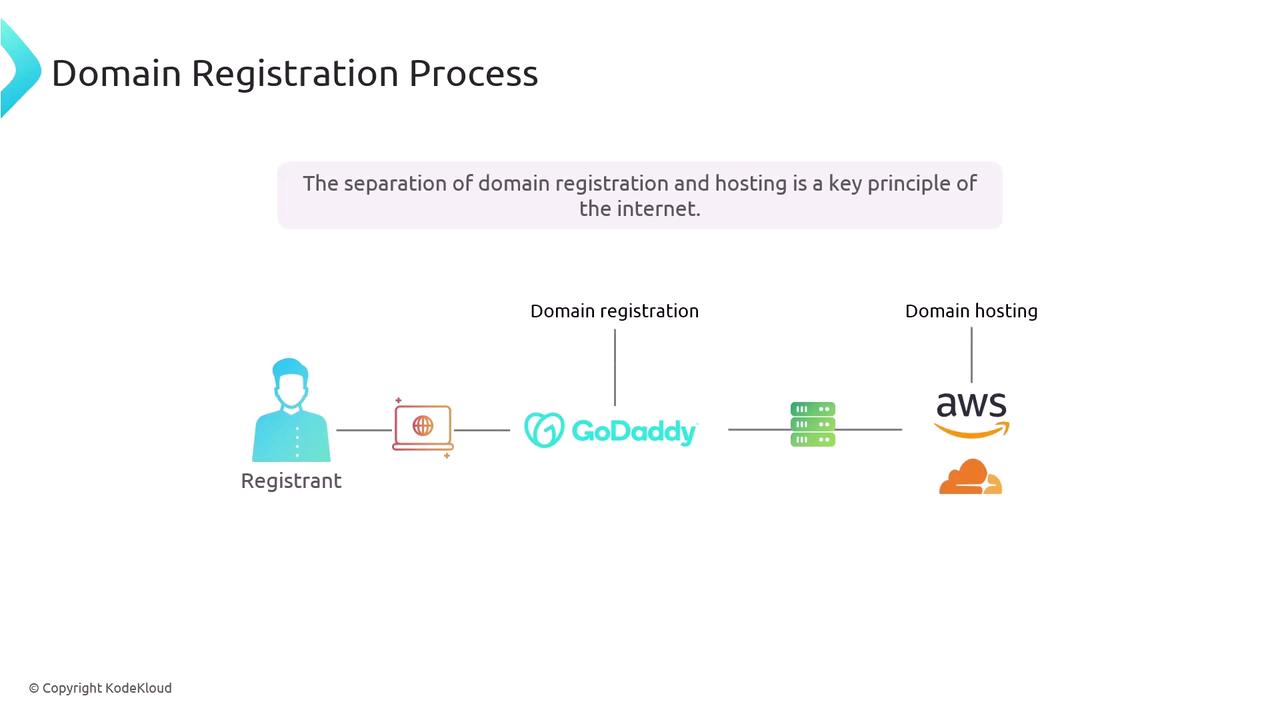
Finally, once the name server details are entered and confirmed, the registry updates its master database—the ultimate source of truth for domains under its TLD. With the process complete, the registrant stands proudly with bestcode.io, ready to embark on a new digital journey.
Important
Remember: The separation between domain registration and hosting allows for flexibility in managing your online presence. You can register your domain with one provider and host your website with another, giving you the freedom to choose the best services for your needs.
Watch Video
Watch video content